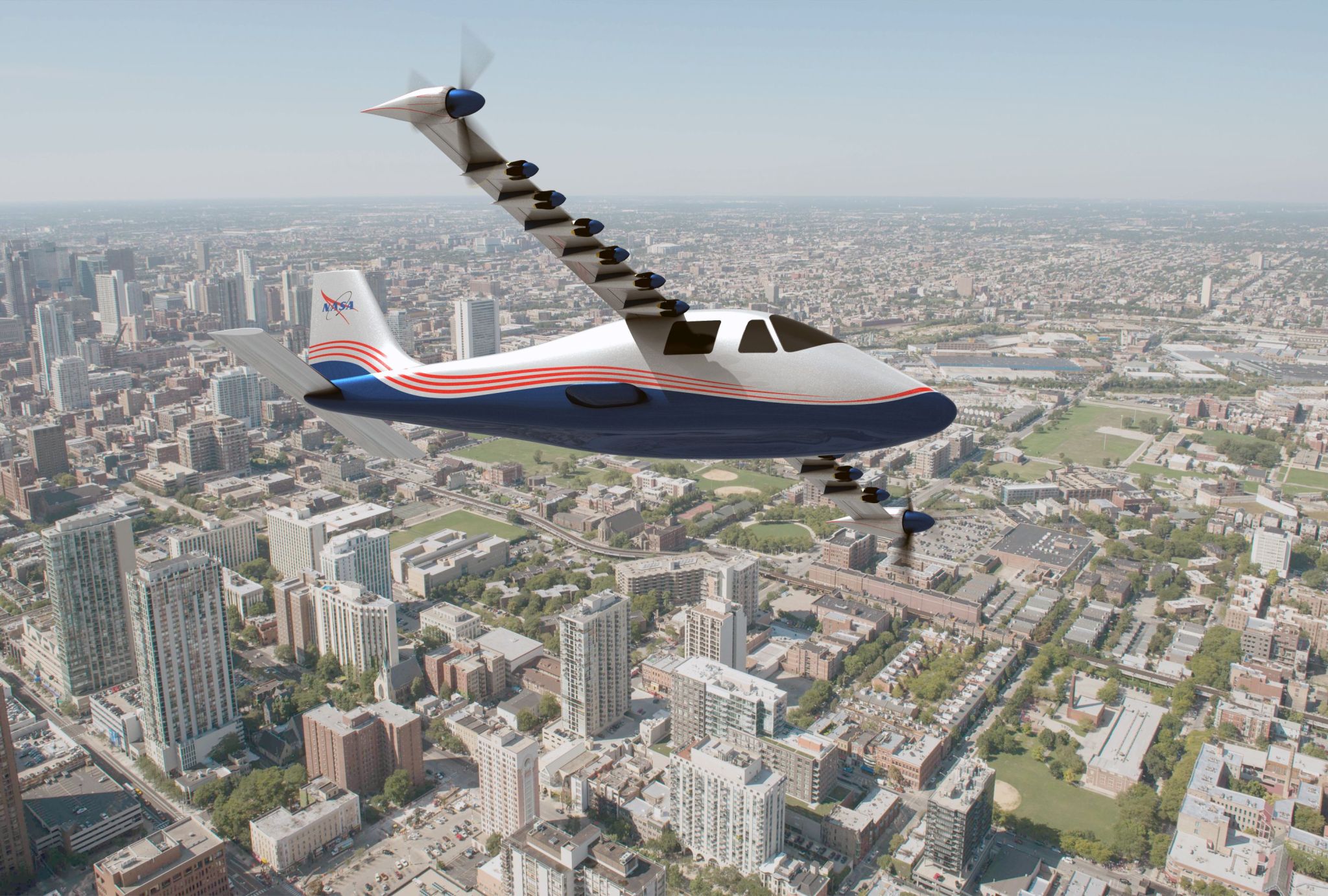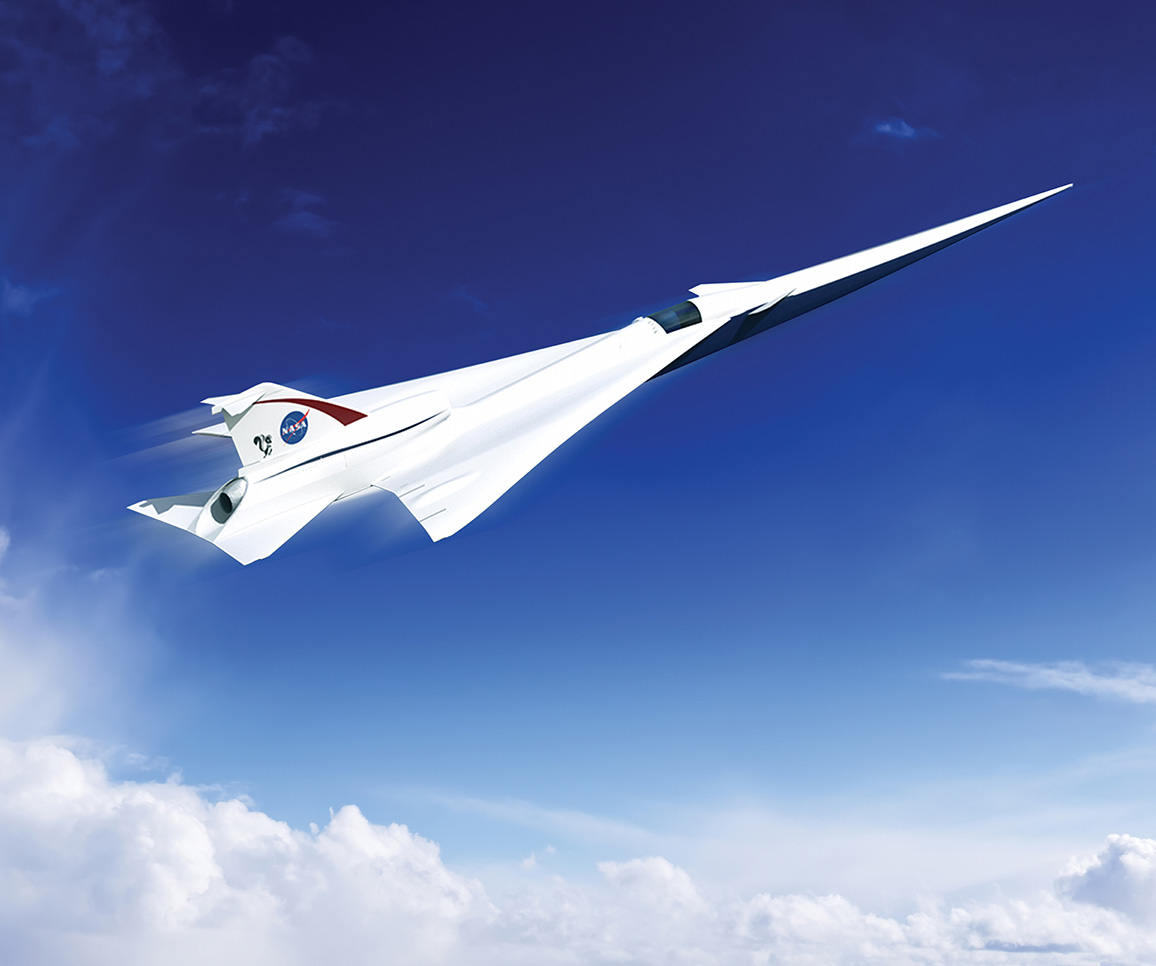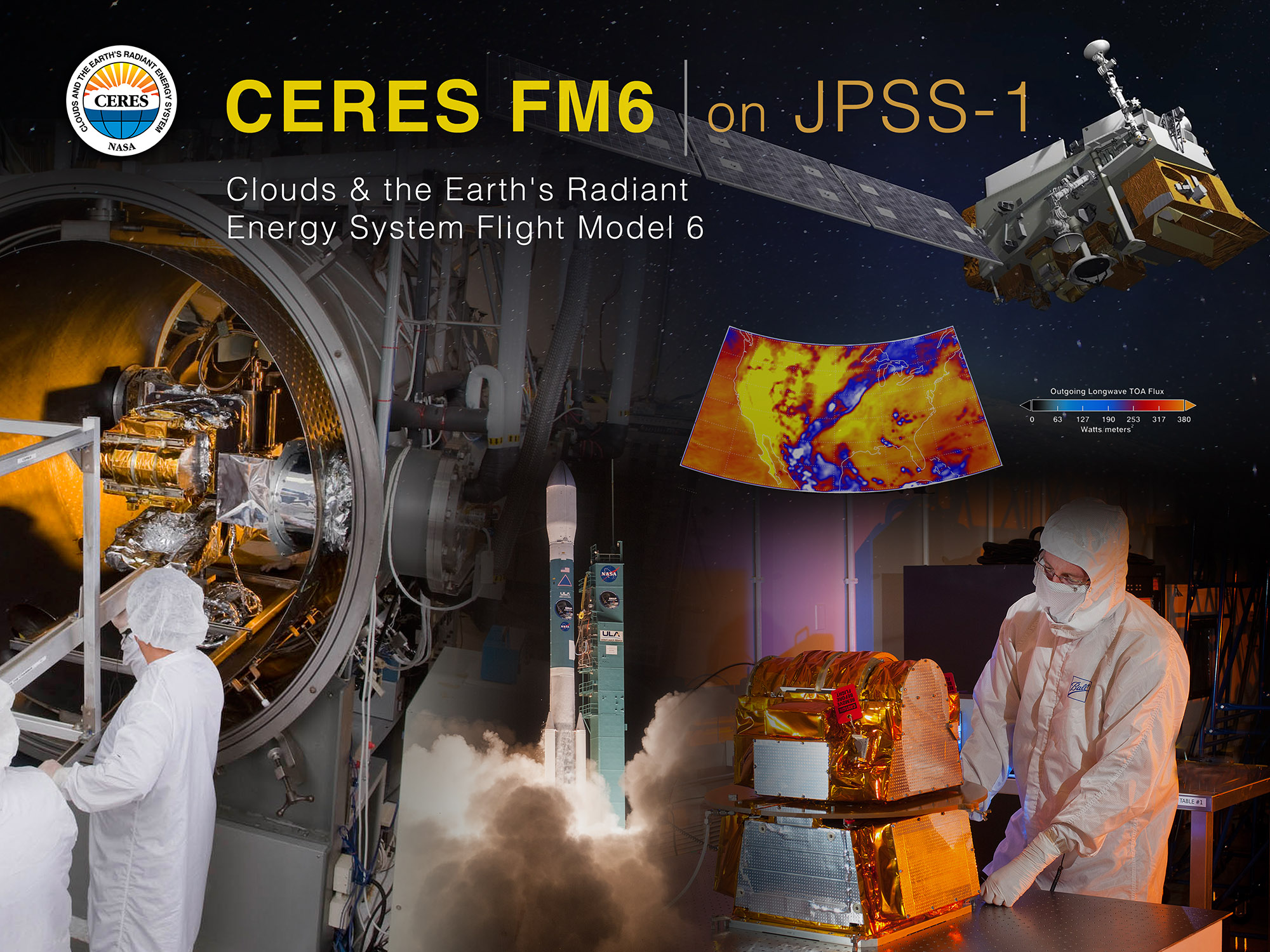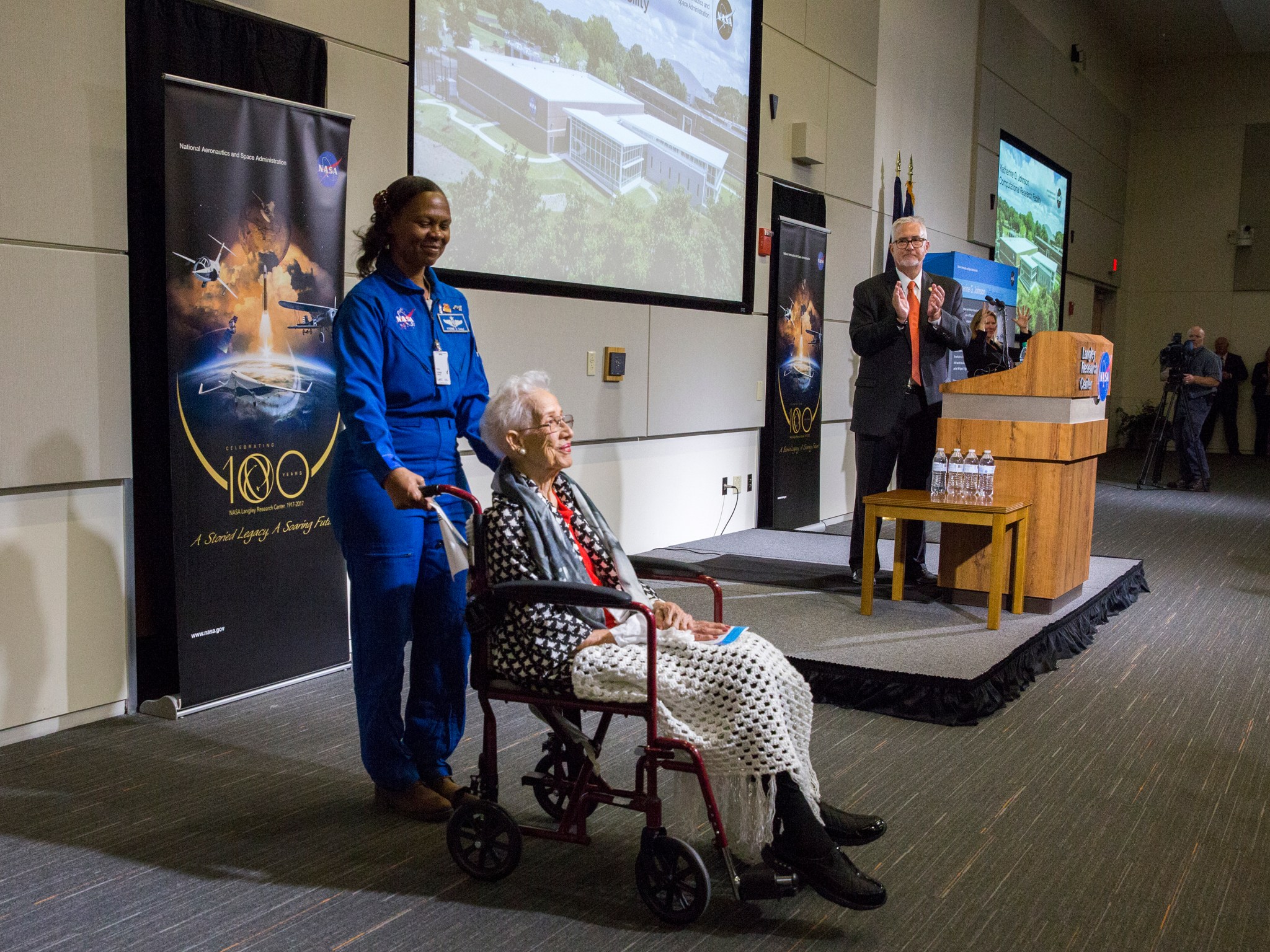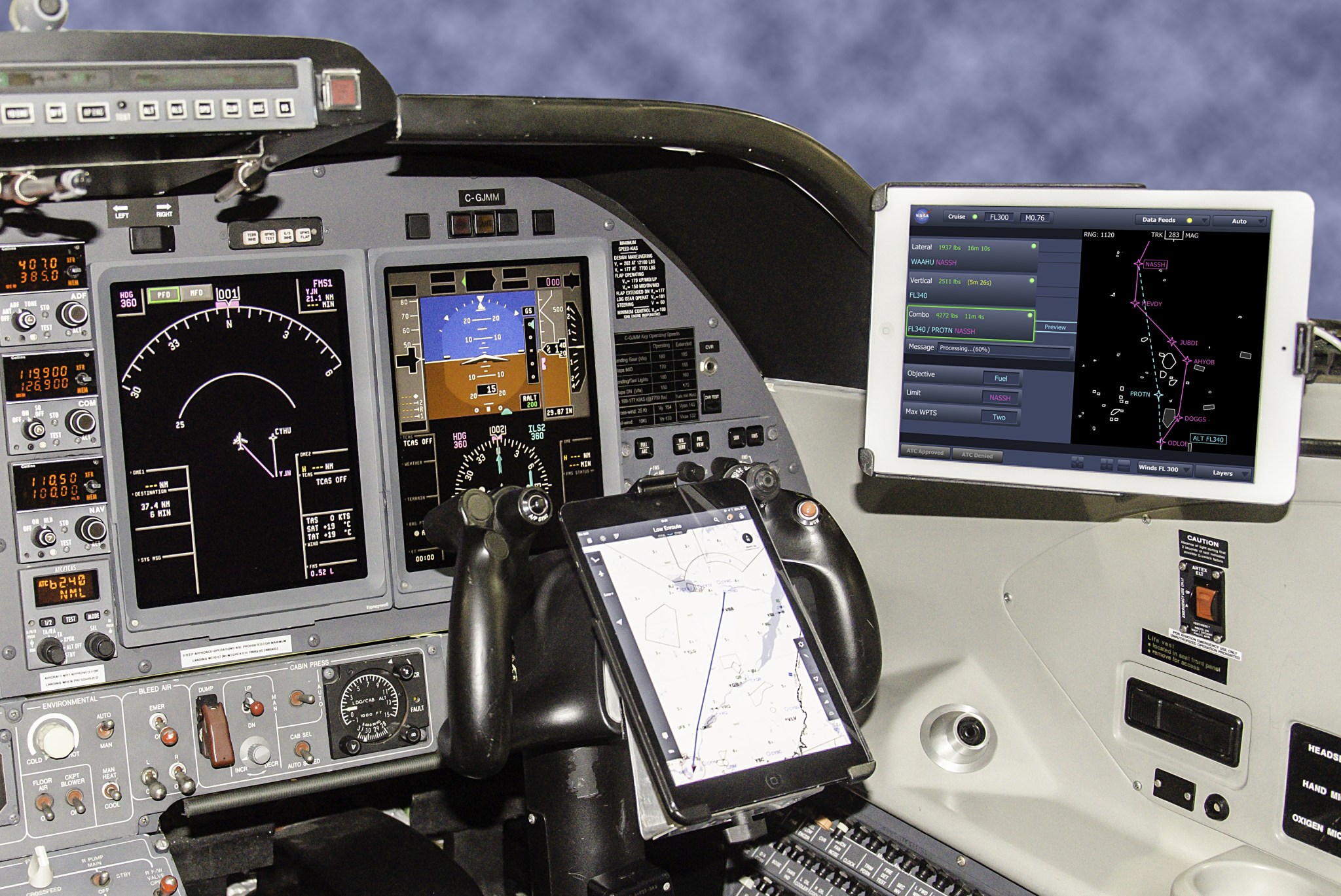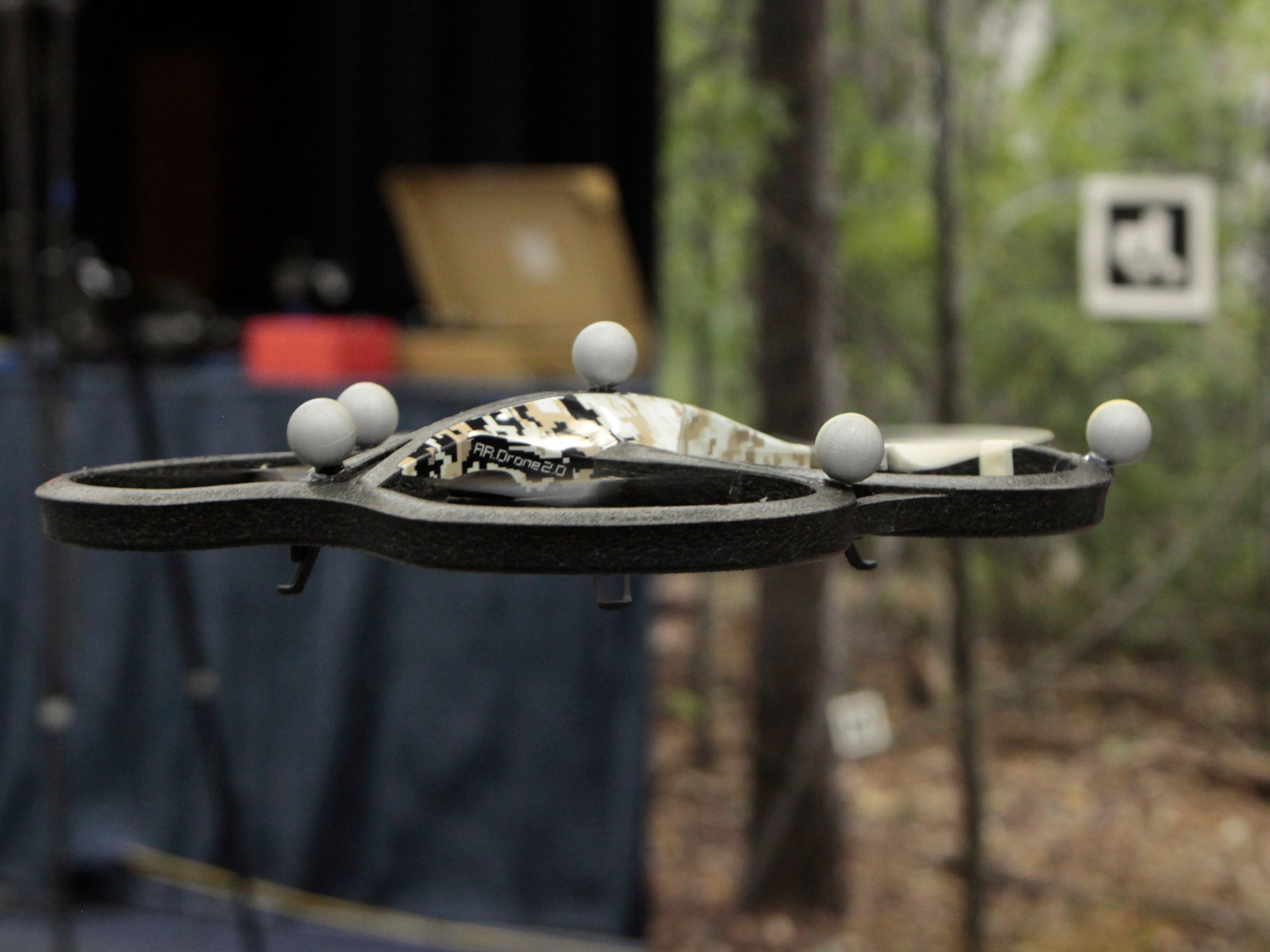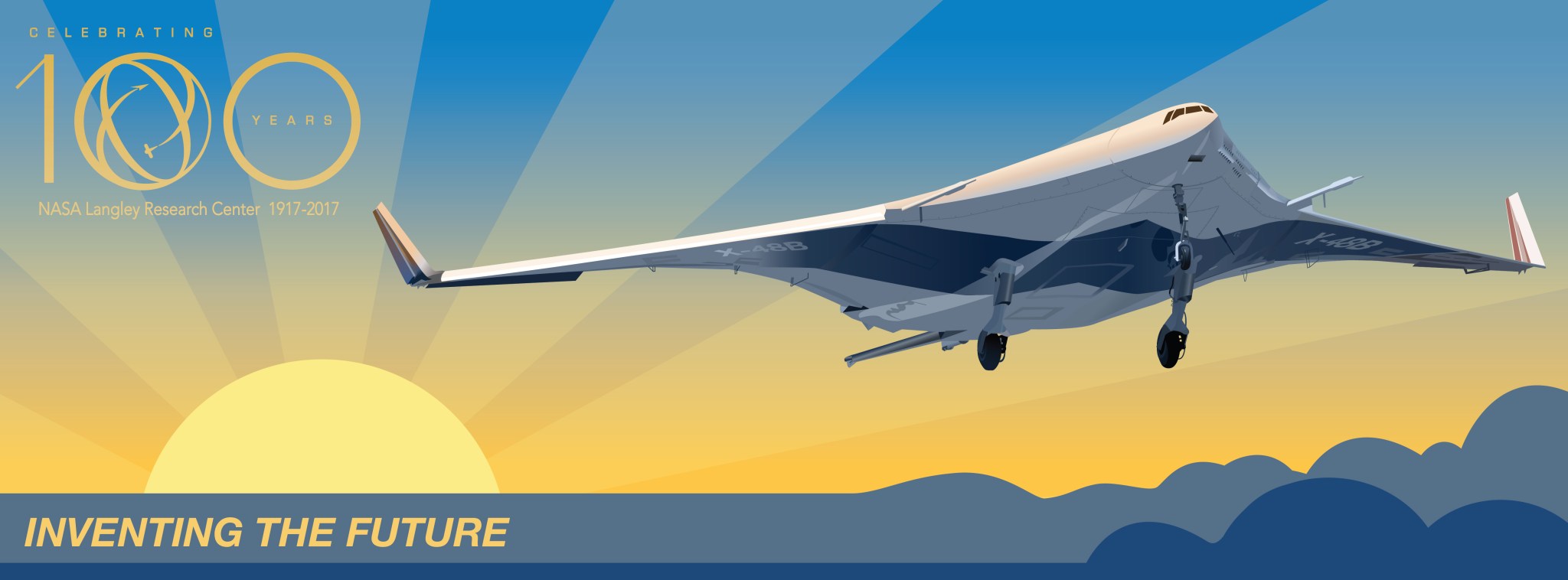Danish physicist Niels Bohr was among several who used similar language when publicly musing about the shape of things to come: “It is very difficult to predict,” Bohr reflected, “especially the future.” For NASA Langley, poised to enter its second century of ingenuity and invention with a wealth of pending and proposed research, near-term prognostication may prove a bit easier.
Langley stands to play a key role in the cutting-edge NASA aeronautics initiative known as New Aviation Horizons, a 10-year plan to design, build and fly experimental aircraft, known popularly as X-planes. Following a rich tradition of past X-plane vehicles, this latest effort will test advanced technologies and revolutionary designs, with the goal of helping industry reduce the time for adoption of next-generation innovation into commercial products. The end result could lead to aircraft that use significantly less fuel, produce fewer emissions, and are far quieter both at airports and in flight.
A case in point is airborne battery power. Although electric propulsion may not immediately replace traditional jet fuel, researchers are beginning to study its prospects. Put through its paces will be a “demonstrator” designated the X-57 – nicknamed “Maxwell” in honor of 19th century Scottish physicist James Clerk Maxwell, a pioneer in electromagnetism theory – a smallish airplane with a long, skinny wing embedded with 14 electric motors: 12 on the leading edge for takeoffs and landings, and, during cruise, one larger motor on each wingtip.
Maxwell will be powered solely by batteries, eliminating carbon emissions, and demonstrate how electric power distributed across multiple motors can propel a small plane to speeds around 175 miles per hour.
Want to travel faster? There’s an X-plane study for that. The Langley-led initiative known as QueSST – short for Quiet Supersonic Transport – will evaluate a design intended to create a soft “thump” instead of the startling and disruptive sonic booms characteristic of faster-than-sound flight today. Possibly as early as 2021, a low-boom, piloted demonstrator is slated for flight over populated areas to collect the data regulators will need to review before certifying overland commercial-supersonic air travel.
Go Wherever, Whenever A long-standing futurist dream is that of an individual flying car: garaged at home, but able to make daily quick and easy jaunts of several hundred miles for work or play. While several companies may field airborne autos in the next several years, urban commuters could have another option: air taxis. Langley researchers have begun work on ways to make such personal air mobility a reality. A key component will be the inclusion of some form of autonomy.
Broadly defined, autonomy is the ability of an unpiloted vehicle to make its own decisions on the literal fly. To explore the rapidly advancing field, Langley’s Autonomy Incubator yoked together a team of civil servants, contractors and student interns with diverse expertise in everything from machine learning and vision, to human psychology, to mechanical engineering, to computer science and electrical engineering.
Other Langley autonomy work continues across an array of aerospace disciplines, including onboard machine learning for self-management and decisionmaking; ways to sense and avoid obstacles; methods to maintain uninterrupted communication with other craft and with ground monitors; and means of instant response to internal and external hazards. Research is also being conducted into autonomous self-assembly of both in-space and on-planet structures in anticipation of humanity’s push beyond Earth into the solar system.
Within the coming decade, the Federal Aviation Administration will transition the country’s air traffic control network from a limited ground-based system of radar sites to an expanded space-based system of satellites, helping to move an ever-increasing volume of American air traffic in and out of the nation’s airports more quickly and safely. Langley is helping to make this Next Generation Air Transportation System, or NextGen, a reality, working on air-traffic management systems for aircraft both large and small, from piloted airplanes, to autonomous vehicles, to air taxis and other personal-travel craft.
One crucial piece of NextGen cockpit software developed by Langley and Engility Corp. in Billerica, Mass. will assist pilots better navigate this increasingly busy airspace. The Traffic Aware Planner – winner of NASA’s Software of the Year award for 2016 – helps determine the most efficient aircraft flight path, allowing pilots to request route changes from air traffic controllers. Alaska Airlines and Virgin America are in the process of preparing to install TAP in some of their planes.
Air Up and Down No matter where commercial aircraft fly, they rarely venture beyond 39,000 feet above the Earth’s surface: about seven miles and change. Not so for Earth observing satellites, such as the next iteration of the Langley-managed Clouds and the Earth’s Radiant Energy System (CERES) instrument, whose polar orbit when deployed in autumn 2017 will reach almost 70 times higher, at 512 miles. A key part of NASA’s Earth Observing System (EOS), CERES Flight Model 6 is the latest generation of a series of space-borne instruments that began collecting data in 1997 on Earth’s energy “budget”: the amount of solar radiation that reaches Earth from the sun and its subsequent outflow back into space.
Langley is also a key participant in the five-year NASA-funded North Atlantic Aerosols and Marine Ecosystems Study (NAAMES), a project investigating how plankton populations give rise to small organic particles that lift from the ocean into the atmosphere to ultimately influence clouds and climate. NAAMES involves four NASA centers, more than a dozen educational institutions, and several other institutes and organizations. Data is being gathered by the ocean-going vessel Atlantis, operated by the Woods Hole Oceanographic Institution, and NASA’s C-130H Hercules airborne laboratory.
To gain a better understanding of the air that envelops and nurtures the planet, Langley is likewise involved in the Atmospheric Carbon and Transport–America – ACT-America – investigation, an ongoing study measuring how weather systems and overall atmospheric circulation contribute to the transport and diffusion of carbon dioxide and methane through the atmosphere. Two NASA aircraft are flying over places that release carbon, called sources, and places that store carbon away, known as sinks, such as the eastern United States, which is rich in both.
Sources are diverse: automobile exhaust, pastures crowded with methane-belching cows, and power plants. However, some of the most recognizable sinks in the eastern United States, like abundant forests and cornfields, act as both sources and sinks. Scientists leading ACT-America are eager to learn if forests and crop fields ultimately serve as net carbon sources or sinks.
Green-Built and Cyberphysical Exiting its first century and entering its second, Langley would like to be a low-or-no emitter of additional climate-warming gases. In part, that’s why NASA’s Hampton center has embarked upon a 20-year revitalization effort to tear down aging structures and put in their place six sustainable, energy-efficient research and development facilities. By 2030, the initiative is slated to save $105 million in maintenance and utilities costs, eliminate $141 million in deferred maintenance, reduce Langley’s infrastructure footprint by 1.21 million square feet, create 604,000 square feet of new building space, and reduce Langley’s current construction-replacement value by $1 billion.
The latest addition to the planned 21st building lineup is the Katherine G. Johnson Computational Research Facility, which was dedicated on September 22 with a ribbon-cutting ceremony attended by family and friends of the 99-year-old noted “human computer” Johnson and a number of her former colleagues, among many others. The facility incorporates energy-saving and environmentally friendly features to reduce its carbon footprint. The non-human computers housed therein will conduct complex analysis and simulation, in some cases replacing but also validating and complementing research done in NASA laboratories and wind tunnels.
In the 21st century, pre-Space Age human computation has been replaced by supercomputers capable of many trillions – in some cases, quadrillions – of mathematical operations per second. These powerful machines will comprise part of Langley’s transition to the “cyperphysical”: a ramped-up blend of the digital with the physical world. Such a transformation will enlist computational power to better leverage real-world outcomes: changing how research is conducted, how projects are managed, how new technologies are evaluated and incorporated into legacy systems, how manufacturing is accelerated, and how innovation and invention are moved ever more quickly from benchtop to marketplace.
For Langley, a century young and going strong, perhaps only one prediction need be made: the second 100 promises to be even better than the first.























